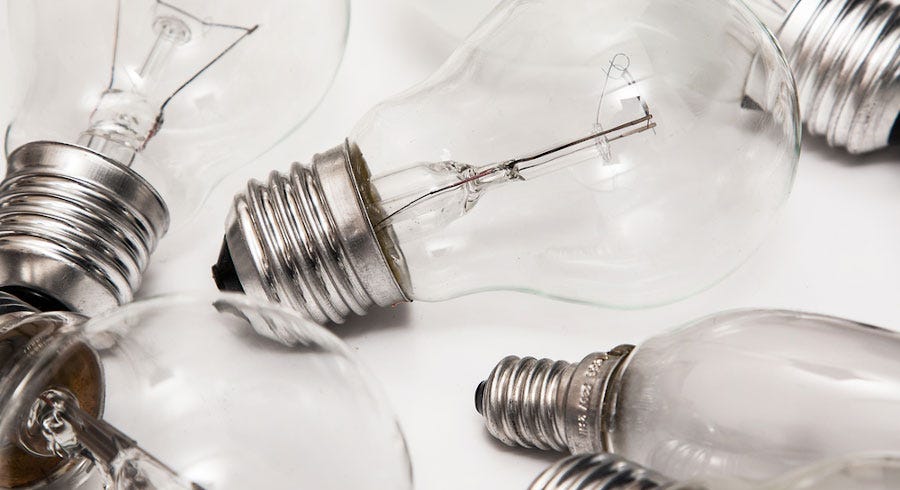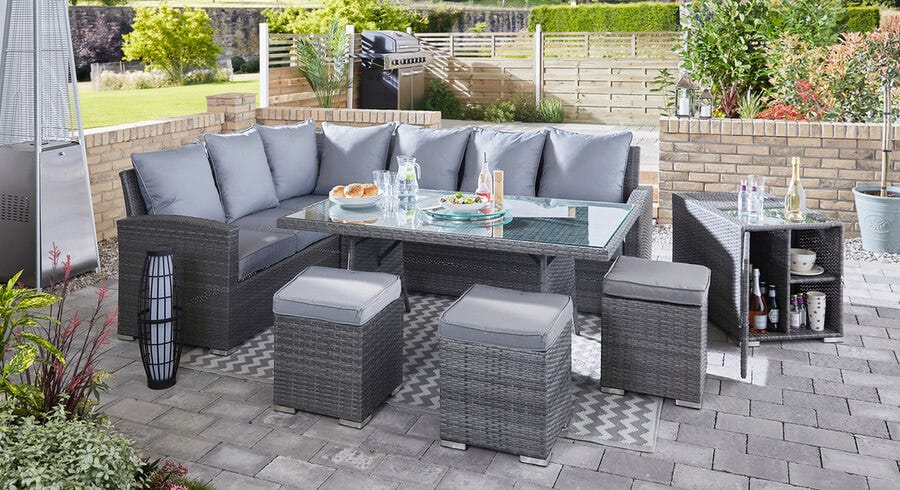Light Bulb Buying Guide


LEDs (Light Emitting Diodes)
These miniature powerhouses are the most energy efficient option overall, although you’ll spend a little more upfront. Each one uses close to 90% less energy than incandescent bulbs, and can last up to 25 years. By changing 100W incandescent bulbs to LEDs, you could save up to £15 per bulb per year. If switching 50W halogen bulbs to LEDs you could save up to £6 per bulb per year. When you take into account how many light bulbs you may need to change around the home, the savings could easily mount up.
Pros
- Most efficient bulb
- Longest lifespan – up to 25 years
- Available in the same familiar shapes as classic bulbs
- Instant light
- Works in low temperatures
- Cool to the touch
Cons
- Often has a higher initial cost compared to other lighting types, although this is offset by their lower energy consumption and longer lifespan in the long run.
- Produces a cooler bluish light, which isn’t suitable for some rooms. But LEDs are available with warmer orange light.
- To dim LEDs, you may need to upgrade to a dimmer that recognises low electrical loads.
Use these for: A long-term solution to save energy in your home.
CFLs (Compact Flourescent Lamp)
The most common type of energy saving bulb. Great value, widely available in different sizes and outputs, and 75% more efficient than an incandescent bulb.
Pros
- A 10-year lifespan (approximately 10,000 hours of use)
- Available in different colour temperatures (cool to warm)
- Good compromise between purchase price and energy savings
Cons
- Some take a while to reach full brightness. Newer CFLs are better, but they’re still not the best choice for areas where you need instant bright light, such as in kitchens and bathrooms
- CFLs contain a small amount of mercury, so you need to be careful when disposing of them
- Some CFLs can’t be used with a dimmer switch
- Some can’t be used outside or work less well in cold temperatures, such as in the garage or shed
Use these for: A cheaper alternative to LED bulbs that still helps you save energy.
Halogens
Up to 30% more energy efficient than tungsten bulbs, can last up to two years. The light colour and quality is similar to an incandescent bulb.
Pros
- Cheapest energy saving bulb
- No warm-up time
- Can be used with a dimmer switch
- Warm, soft light
Cons
- Short lifespan compared to LED and CFL lights
- Not as energy efficient as LED and CFL lights
Use these for: A cost effective replacement for incandescent bulbs.
See our halogen bulbsFAQs
Will energy-saving light bulbs save me money?
Replacing all the halogen bulbs in your home with LED could save you up to £375* a year on energy. Although LEDs usually cost more to buy, they last up to 25 years, so you’ll make your money back in the long run. Halogen bulbs are the cheapest replacement for incandescent bulbs, but you’ll notice less of an impact on your monthly bill.
I used to look at wattage for a bulb’s brightness. Can I do this with energy saving bulbs too?
Wattage is actually a measurement of power consumption and energy efficient bulbs use much less. You can’t rely on the wattage of your old incandescent bulbs as a guide when replacing them. Lumen output is a proper measurement of brightness, so it’s a much more effective way of choosing the right bulb.
| Old bulb wattage | Lumen (brightness) equivalent | Where to use it |
|---|---|---|
| 100W | 1200 - 1300 | Rooms where you need very bright light. Also great for large rooms with a single light fitting. |
| 60W | 650 - 700 | The most common type of bulb – good for average-sized rooms or larger rooms with more than one light fitting. |
| 40W | 350 - 400 | Single reading lamps, or fittings that take more than one bulb. |
| 25W | 200 - 225 | Use these as ambient lights, or interior lights in cupboards, closets etc. |
|
Old bulb wattage |
Lumen (brightness) equivalent |
Where to use it |
|
100W |
1200 - 1300 |
Rooms where you need very bright light. Also great for large rooms with a single light fitting. |
|
60W |
650 - 700 |
The most common type of bulb – good for average-sized rooms or larger rooms with more than one light fitting. |
|
40W |
350 - 400 |
Single reading lamps, or fittings that take more than one bulb. |
|
25W |
200 - 225 |
Use these as ambient lights, or interior lights in cupboards, closets etc. |
Do energy saving light bulbs take a long time to reach full brightness?
Modern CFLs only take a few seconds to warm up. LEDs reach full brightness instantly.
What’s the light like from energy efficient bulbs?
You can choose the type of light you want. If you want a similar light to the old tungsten bulbs then choose a warm white or soft white bulb, with a Colour Rendering Index (CRI) of at least 80.
What is the Colour Rendering Index (CRI)?
It tells us how well a bulb illuminates colour. Two bulbs can have the same ‘soft white’ light, but the bulb with a higher CRI will show colours more vibrantly. A higher CRI can be useful for room designs where colour is an important feature. As a benchmark, look for bulbs with a CRI of around 80 – this is suitable for most rooms.
What is colour temperature?
Colour temperature is a way of measuring how warm or cold a light appears. It’s in degrees Kelvin (K). Light that looks warmer, such as red or orange light, has a lower value. Light that looks cooler, such as blue or white light, has a higher value. As a guide, traditional incandescent bulbs are between 2700K – 3000K. Cooler light bulbs are between 5000K – 6500K and normal daylight is about 6000K. Use bulbs which produce colder light in rooms like the kitchen, where you need maximum visibility. Warmer light is best for rooms where you want to relax, like the living room or bedroom.
Can you see CLFs flicker?
No. Modern CFLs turn on and off much faster than we can see.
Do CFLs contain mercury? Are they bad for the environment or dangerous?
CFLs contain tiny traces of mercury but not enough to harm people. But you should still be careful when clearing away broken lamps. Overall, using CFLs actually reduces mercury pollution. The biggest culprit of mercury pollution is the burning of fossil fuels for electricity and CFL’s use 80% less electricity than traditional bulbs.
How do I dispose of energy saving bulbs?
LEDs and halogen bulbs can go into your normal household waste, but CFL bulbs have to be recycled because of the small amount of mercury they contain. Search online for your nearest council recycling point, or hand them in at your local Robert Dyas store.
*Calculated on an average of 34 bulbs per home. Based on 2.7hrs per day at an average cost of 0.28p per kwh on a 60W equivalent bulb. Cost correct as of 19/08/22.










